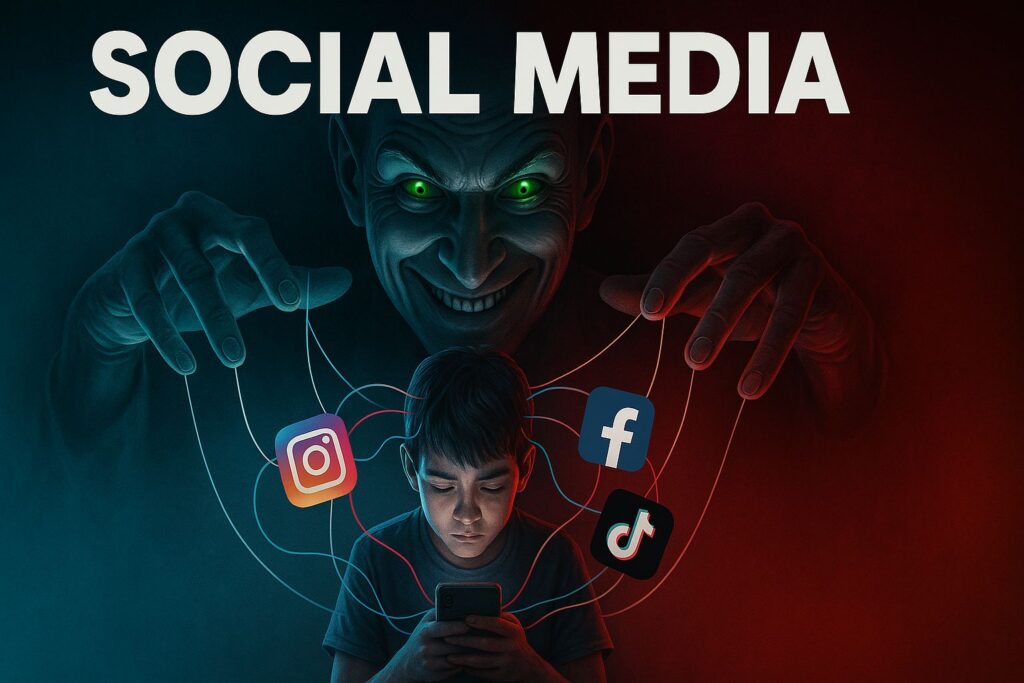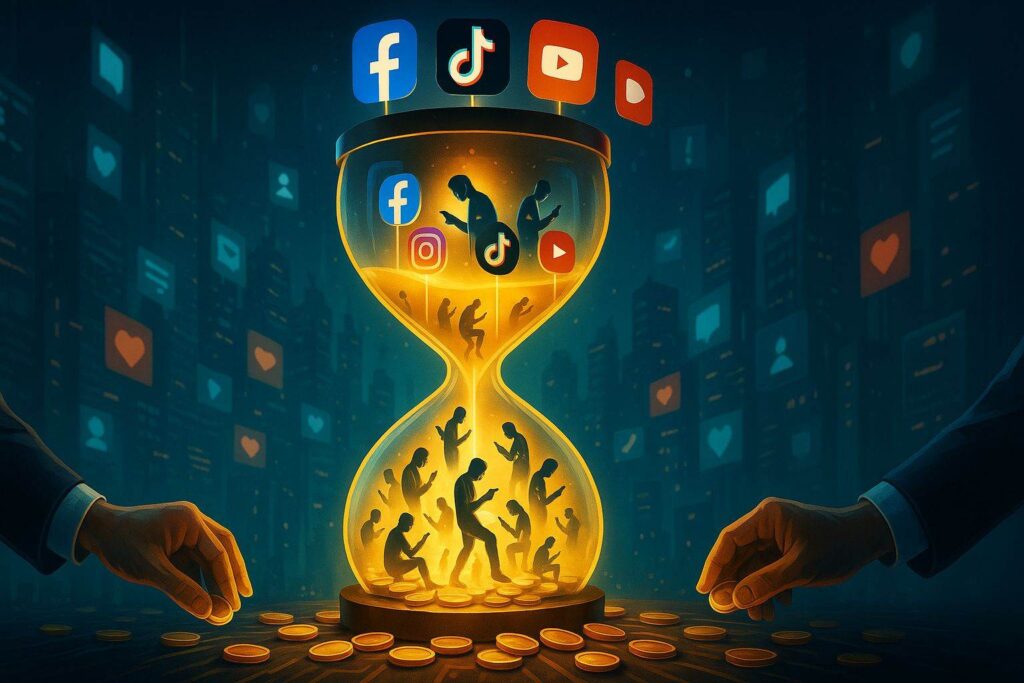Shedding Light on the Dark Side of Social Media: Addiction, Data, and Control

In an age defined by constant connectivity, our digital lives have become inextricably woven into the fabric of our existence. What began as a promise of global connection and boundless information has quietly evolved into a complex ecosystem, subtly influencing our thoughts, behaviors, and even our deepest desires. While the allure of instant communication and endless entertainment is undeniable, a closer look reveals a sophisticated architecture designed not merely to connect, but to capture and monetize our most precious resource: attention. This exploration delves into the intricate mechanisms by which modern digital platforms operate, uncovering the hidden costs of our engagement and the profound impact they have on our individual and collective well- being.
The Attention Economy: A New Gold Rush
At the heart of the digital revolution lies the ‘attention economy,’ a paradigm where human attention is the most valuable commodity. Just as historical empires were built on the control of land or natural resources, today’s tech giants thrive by commanding the gaze and focus of billions. Consider the vast sums invested in infrastructure—data centers costing billions of dollars—to provide seemingly free services like social networking.
Related: Ugly Labubu Doll Worth $150,000 – Inside the Resale Craze
This apparent generosity masks a fundamental truth: if a product is free, then you are the product. Our data, our interactions, and our time spent scrolling are the raw materials that fuel this colossal industry. Digital platforms meticulously collect vast quantities of user data, transforming it into intricate patterns that reveal our habits, preferences, and even our psychological profiles. Every like, share, comment, and even the time spent hovering over a post contributes to a detailed dossier on our digital selves.

This granular understanding enables platforms to offer advertisers an unprecedented level of precision, ensuring that marketing messages reach the most receptive audiences. The traditional advertising model, with its broad, untargeted campaigns, pales in comparison to the hyper-personalized approach of the attention economy, where ads are tailored to our perceived needs and desires, often before we even consciously recognize them.
The Data Goldmine: More Valuable Than Oil
The sheer volume and depth of data collected by digital platforms are staggering. Beyond basic demographic information, these platforms track our locations, the devices we use, our search histories, and even the metadata embedded in the images we share, which can reveal GPS coordinates and camera details. This continuous stream of information allows for the creation of highly accurate behavioral profiles, enabling platforms to predict our next actions with remarkable accuracy.
This predictive power extends to understanding our political leanings, religious views, financial capabilities, and even our emotional states. One striking example involved a user who, after a breakup, used a dating application for a short period. Upon requesting her data, she received 800 pages of information, revealing intimate details about her loneliness, preferences, and even her music taste—information she herself was not fully conscious of.
This immense value of personal data has led to it being dubbed as more valuable than oil, a sentiment echoed in a 2017 report by The Economist. However, this immense value also makes it a prime target for malicious actors. Data breaches are a constant threat, with millions of user records, including email IDs and card details, being compromised and sold on the dark web. This stolen data can then be used for identity fraud, phishing attacks, and other nefarious activities, further highlighting the precariousness of our digital footprint.
The Architects of Addiction: How Platforms Keep Us Hooked
The pervasive nature of social media is no accident; it is the result of deliberate design choices aimed at maximizing user engagement and, consequently, data collection. These platforms employ highly skilled psychologists, neuroscientists, and behavioral experts who meticulously craft features to exploit our innate psychological vulnerabilities. The goal is simple: to keep us glued to their applications for as long as possible. As one prominent streaming service CEO famously stated, their biggest competitor isn’t another company, but human sleep—the only time their algorithms cease to influence us.
At the core of this engagement strategy is the manipulation of our brain’s reward system, specifically the release of dopamine. While often misconstrued as the ‘pleasure chemical,’ dopamine is primarily associated with motivation and anticipation of reward. When we receive a notification, a ‘like’ on our post, or a positive comment, our brains release dopamine, creating a sense of excitement and satisfaction.

This instant gratification creates a powerful feedback loop, compelling us to seek out more of these rewarding experiences. However, this constant stimulation can lead to a phenomenon known as ‘hedonic treadmill,’ where the novelty of these rewards diminishes over time, requiring ever- increasing stimuli to achieve the same level of satisfaction. This can manifest as a constant craving for more likes, more comments, and more engagement, pushing users deeper into a cycle of compulsive checking and scrolling.
Two critical factors contribute to the addictive potential of digital platforms: ease of access and speedy rewards. Social media applications are designed for effortless engagement; a few taps on a smartphone can instantly transport us into a world of endless content. Unlike traditional activities that require effort and patience, social media offers immediate gratification. A quick swipe can bring a new video, a new post, or a new notification, providing a continuous stream of novel stimuli. This combination of accessibility and instant reward makes these platforms incredibly difficult to disengage from, mirroring the addictive patterns observed in substance abuse and gambling.
The Illusion of Connection and the Rise of Echo Chambers
While social media platforms are often touted as tools for connection, their design can inadvertently foster isolation and radicalization. Algorithms, designed to show us more of what we already like, can create ‘echo chambers‘ where users are primarily exposed to information and viewpoints that align with their existing beliefs. This can reinforce biases, limit exposure to diverse perspectives, and contribute to a more polarized society.
Furthermore, the curated, often idealized, portrayals of life on social media can lead to increased insecurity, anxiety, and depression, particularly among younger users who may compare their own realities to the seemingly perfect lives of others. The pursuit of external validation through likes and comments can erode self-esteem and foster a sense of inadequacy.
Reclaiming Our Digital Lives: Strategies for Well-being
Recognizing the profound impact of digital platforms on our lives is the first step towards fostering a healthier relationship with technology. While completely disengaging from social media may not be feasible or desirable for everyone, there are actionable strategies to mitigate its addictive potential and reclaim our attention. One effective approach is to reduce the ease of access. This can involve deleting social media applications from smartphones and accessing platforms only through a web browser on a computer, which introduces a slight barrier to instant gratification.

Turning off notifications is another powerful step, as it breaks the constant cycle of dopamine-driven alerts and allows users to engage with platforms on their own terms, rather than being constantly pulled in by external triggers. For those struggling with more severe addiction, utilizing private browsing modes that require re-entering login credentials for each session can further increase the friction of engagement, making compulsive use less likely.
Ultimately, the responsibility lies with both individuals and the platforms themselves. While users can adopt personal strategies for digital well-being, there is a growing call for greater transparency and ethical design in the technology industry. Understanding the mechanisms at play and actively choosing how we engage with digital platforms is crucial for navigating the complexities of our increasingly connected world and ensuring that technology serves humanity, rather than the other way around.
Related: Ugly Labubu Doll Worth $150,000 – Inside the Resale Craze
References
- Stanford Law School – Social Media Addiction and Mental Health: The Growing Concern for Youth Well-Being (2024, May 20)
- McLean Hospital – How Social Media Affects Mental Health (2025, July 5)
- AddictionHelp.com – Social Media Addiction Statistics: Risks, Warnings & Safety (2025, June 22)
- Cloudwards.net – Social Media Addiction Statistics: Facts, Stats & Trends in 2025 (2025, April 25)
- Confinity – Social Media Privacy in 2025: New Platforms and Trends (2025, March 28)
- Kaspersky – Privacy Issues with Social Media
- The Economist – The world’s most valuable resource is no longer oil, but data (2017)


